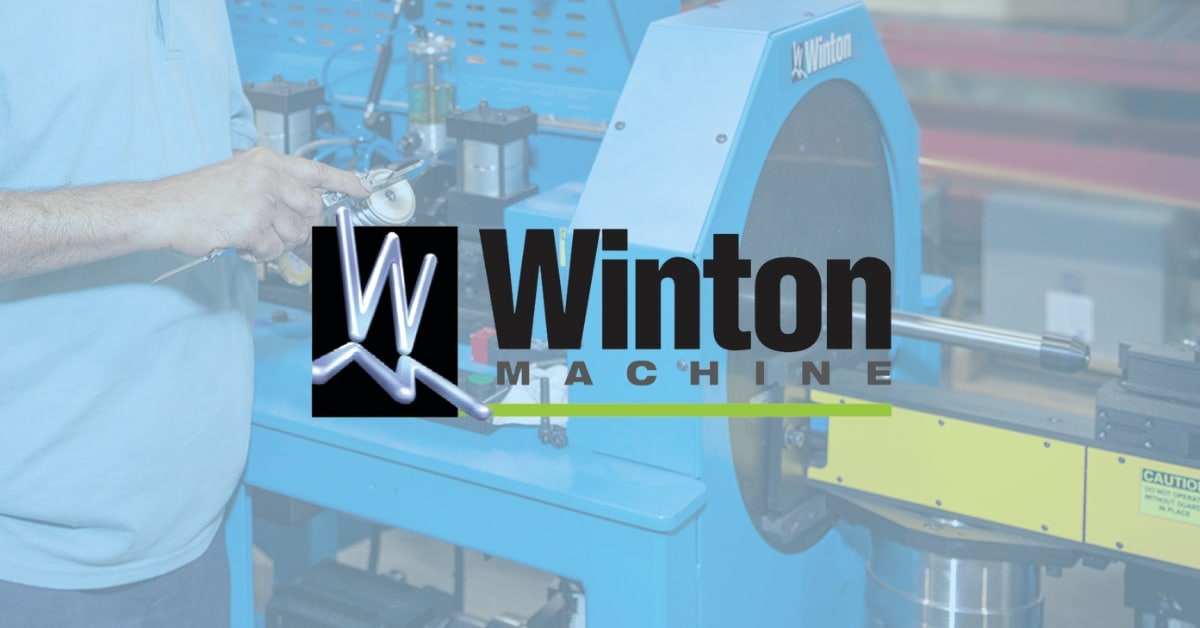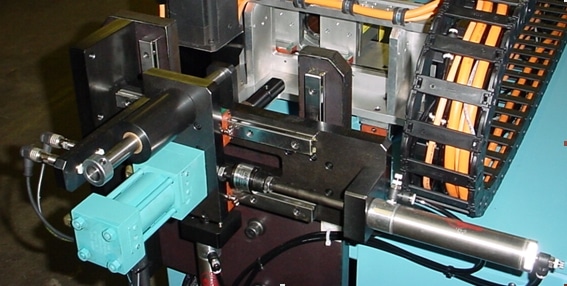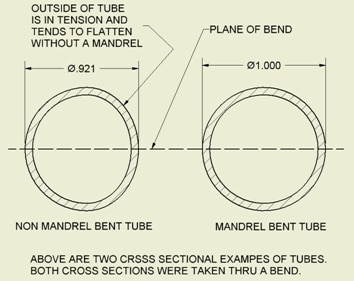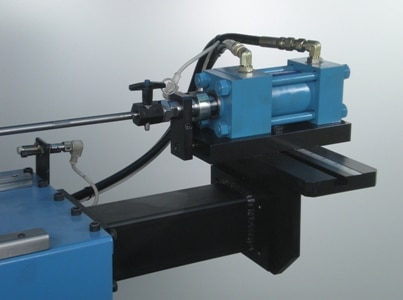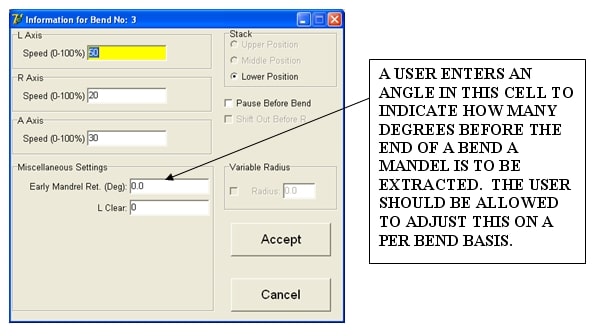Shaping Profits With a Mandrel Extractor
Why Use a Mandrel Extractor
Bending a tube and preventing it from collapsing is a mystery to most folks. This is especially true for those whose lively hood does not depend on bending tubes. For those that bend tubing for a living, knowing how to improve the ovality of a bend can be of interest.
Not all bent tubes need to round thru the bent cross section. It is application dependent. Shopping carts don’t need nice round profiles thru the bend zone. On the other hand, high end furniture such as a medical cart or an aerospace fuel line will need to exhibit minimum deformation in the bend zone.
A mandrel is a tool used on a tube bending machine that supports the inside of a tube in the bend zone while the bend is being formed. The effect of using a mandrel is shown in the figure below.
However, the mandrel used is only as good as the mandrel extractor assembly and the control system supporting the mandrel extractor assembly itself. It is the job of a mandrel extractor on a tube bending machine to thrust a mandrel forward into a bend zone and then at the right moment in time retract if from the same bend zone. A little off in the timing can cause extensive damage.
Various Types of Extractors
One of the basic types of mandrel extractors is actuated by a mechanical linkage powered to an operator’s foot. This type of extractor is can be found on small diameter tube bending machine. One advantage of this type of extractor is the initial cost. No electricity needed to extract the mandrel.
The next step up from a mechanical linkage is an extractor that is hydraulic/manual in nature thus requires human power to pump a devise to generate the necessary pressure to extract a mandrel. The advantage of this system is that it can be applied to extract mandrels from larger diameter tubes.
The balance of the mandrel extractors found on modern tube bending machines are most often integrated into the controller of the machine itself.
A pneumatic extractor is a good choice for small diameter tubing. Environmentally friendly, a pneumatic cylinder can be used to pull a mandrel from inside the bend zone. However, as the tube diameter increases, the typical 80 PSI shop air found on most shop floors will tend to limit the capacity of this approach.
More common on modern tube bending machines is a hydraulic extractor; see below. Where a pneumatic extractor is limited in capacity, a hydraulic extractor shows no such limit. With the right size hydraulic cylinder, a hydraulic mandrel extractor is an efficient way to extract a mandrel for a bend zone.
One asset that a hydraulic extractor exhibits is its lack of hesitation to extract a mandrel upon command. On the other hand, some pneumatic extractors can delay even a small amount before the mandrel starts to extract out of the bend zone. This translates into longer cycle times.
Another type of extractor makes use of an electric servo. Greener than a hydraulic extractor, an electric servo type extractor can work to shave off cycle time from the overall bending process. Unlike pneumatics, electric servos are less limited capacity wise. However, initial cost of the extractor and spare part costs should be considered. It is never fun to purchase a configured servo drive from the original machine tool builder when your bender is down.
Some of the other variations involving mandrel extractors include bending square tubing, multi-stack vertical positioning and extractors that position a mandrel in more than two horizontal locations. For example, some tube loaders may require a mandrel extract to a 3 position.
Controlling a Mandrel Extractor on a CNC Tube Bender
The goal of the machine’s controller is to get the mandrel itself in and out of the bend zone at the right time in the bending process. For the most part, this is not too difficulty for the average controller. A mandrel extractor typically pushes the mandrel into a bend zone before the clamp closes. Then, after a bend is finished, the mandrel extractor pulls the mandrel out of the bend zone before the clamp and pressure die open. It is most important for the machine’s controller to confirm that the mandrel is extracted from the bend zone before the clamp and pressure die both open. The figure above show a prox sensor on a hydraulic mandrel extractor that is used to give feedback to a machine’s controller thus confirming that the mandrel was extracted.
On some tube bending applications, it is important to extract the mandrel form the bend zone before the end of the bend is complete. When a bend is being formed at 120° + per second, a machine’s controller must be able to react quickly in order to successfully retract a mandrel consistently from bend to bend, part to part. This technique is known as early mandrel extraction. High end tube bending controls most often allow for this feature thru the Windows front end; see below.
In the figure above, a Windows front is shown as an example of how a user can adjust the extraction point.
Alternatives to a Mandrel Extractor
To this very day some tubes are bent using a low melt alloy. The low melt alloy, often melting around 158° F is poured into a tube and allowed to cure before a bend is made. Once the bend is made, the low melt alloy is heated to a temperature above it melting point and then removed from the bend tube.
Another approach is to consider pinch type tooling. Pinch type tooling is designed to control the ovality of a tube in the bend zone. Successful pinch type tooling does not require a mandrel.

George Winton, P.E. designs and builds CNC tube fabrication equipment for Winton Machine in Suwanee, GA. He can be reached at gwinton@wintonmachine.com or 888.321.1499.
Related Documents
About the Machines We Build
All of our semi-rigid coax and tube fabrication machines at Winton are designed, manufactured, and tested in-house. We have a large line of standard products as well as the ability to engineer the best solution for our customer’s needs. Our experienced sales staff makes sure that our customers can justify their capital equipment investment by offering a solution that is exactly what they need in order to manufacture their parts. Please contact us today to discuss your project.


